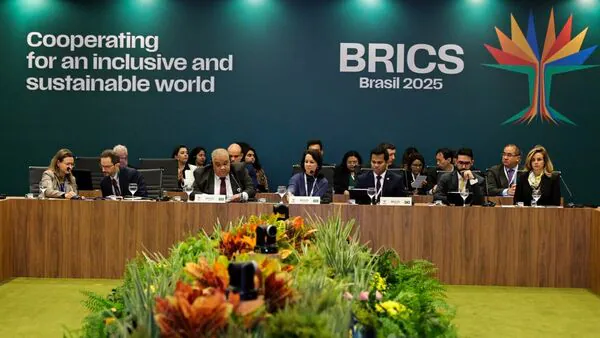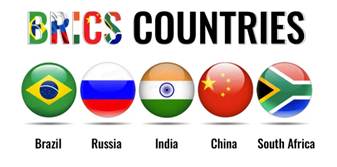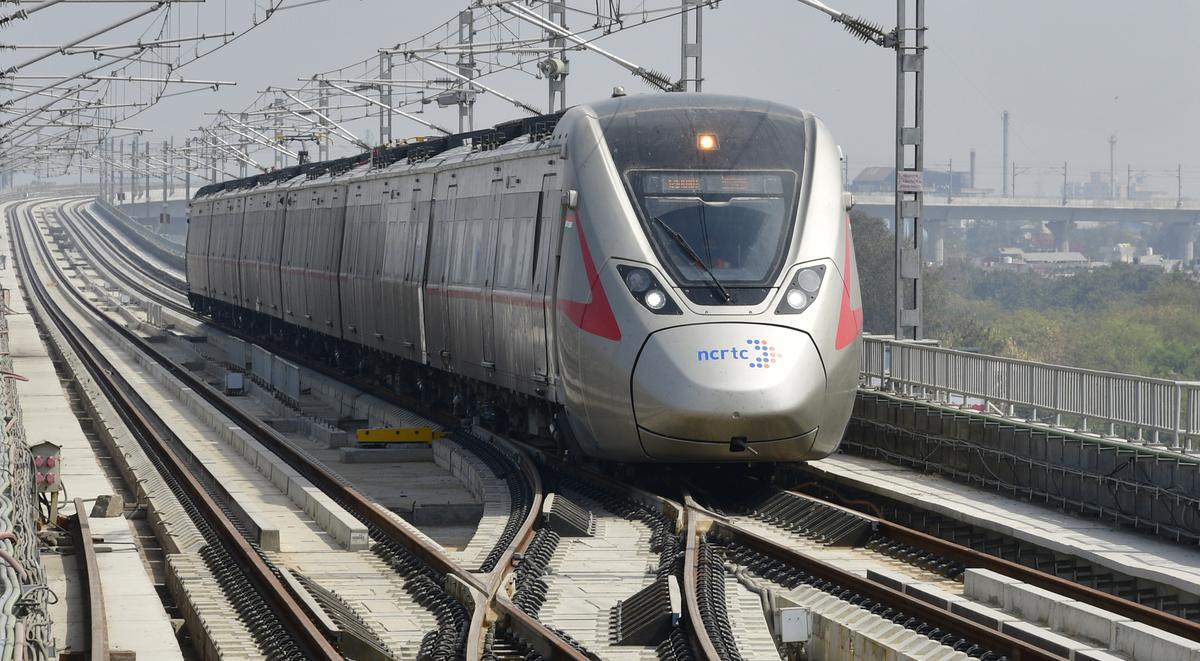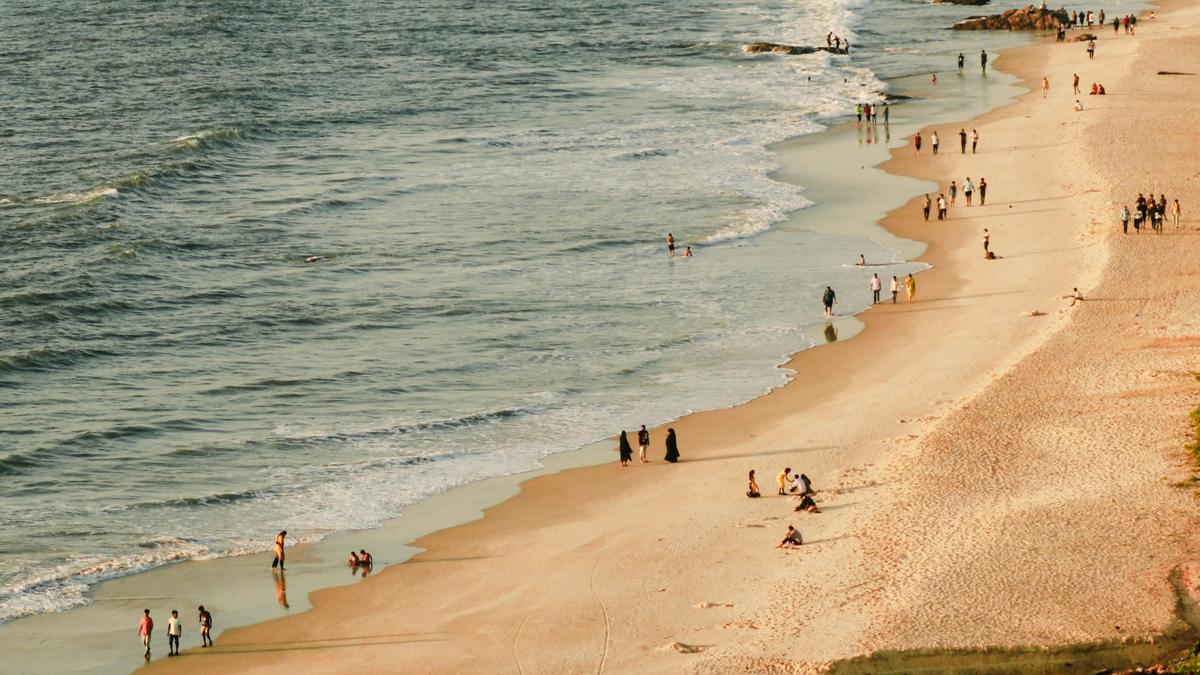- Courses
- GS Full Course 1 Year
- GS Full Course 2 Year
- GS Full Course 3 Year
- GS Full Course Till Selection
- Online Program
- GS Recorded Course
- NCERT (Recorded 500+ Hours)
- Polity Recorded Course
- Geography Recorded Course
- Economy Recorded Course
- AMAC Recorded Course
- Modern India, Post Independence & World History
- Environment Recoded Course
- Governance Recoded Course
- Science & Tech. Recoded Course
- International Relations and Internal Security Recorded Course
- Disaster Management Module Course
- Ethics Recoded Course
- Essay Recoded Course
- Current Affairs Recoded Course
- CSAT
- 5 LAYERED ARJUNA Mentorship
- Public Administration Optional
- ABOUT US
- OUR TOPPERS
- TEST SERIES
- FREE STUDY MATERIAL
- VIDEOS
- CONTACT US
India Calls for End to Export Controls Among BRICS Nations
India Calls for End to Export Controls Among BRICS Nations

- On 21st May 2025, The 15th BRICS Trade Ministers’ Meeting was held under the leadership of Brazil’s BRICS Presidency.
- The meeting’s theme was “Strengthening Global South Cooperation for More Inclusive and Sustainable Governance.”
India’s Main Demand
- In this meeting, India asked for the removal of export controls among BRICS countries.
- The goal is to make trade easier and stronger within BRICS, and to promote closer cooperation among countries of the Global South (developing countries).
Why This Matters
- Export controls slow down trade and make it harder for BRICS countries to help each other.
- India’s call promotes better trade relations and unity among developing countries.
- It supports India’s goal of leading a fair and balanced global trade system.
- It strengthens India’s role as a link between East and West, and North and South in global politics.
Joint Declaration and Related Documents
- The meeting also approved a Joint Declaration, along with 3 important documents:
- BRICS Declaration on WTO Reform and Strengthening of the Multilateral Trading System
- BRICS Data Economy Governance Understanding
- BRICS Trade and Sustainable Development Framework
- These papers show BRICS’ promise to support a fair, open, and rule-based global trade system.
- They also warned that climate-related trade rules should not be used unfairly to block trade or treat some countries badly.
India’s Focus on WTO Reforms
- India pointed out the urgent need to fix longstanding development problems in the World Trade Organization (WTO).
- It especially called for a permanent solution for Public Stockholding (PSH)
- It allows countries to keep food stocks for food security without facing WTO penalties.
- India shared its “30 for 30” proposal, suggesting 30 small improvements to mark WTO’s 30th anniversary in 2025.
- India also stressed that sustainable development is part of its culture and must be a key part of global trade rules.
India’s Representative and Key Points
- Economic Adviser from India’s Department of Commerce, represented India and emphasized:
- The need to remove trade restrictions that disturb important supply chains.
- The call for rich countries to support the transfer of Environmentally Sound Technologies (ESTs) to developing countries, with enough financial help.
- Promotion of Mission LiFE (Lifestyle for Environment), India’s global effort encouraging responsible consumption and recycling as part of a fair climate plan.
Digital Economy and Technology Cooperation
- Moreover, The meeting recognized that digital growth and technology are important for future cooperation.
- The BRICS Data Economy Governance Understanding called Digital Public Infrastructure (DPI) a key tool for digital growth.
- India confirmed its leadership in digital governance through programs like:
- Digital India
- IndiaAI
- India also promised to work with other countries on digital infrastructure, artificial intelligence, and cybersecurity through international groups like:
- Global Partnership on AI (GPAI)
- G20
Recent Developments of New Development Bank (NDB) :
- Algeria formally admitted as a new member of the New Development Bank (NDB).
- On 19 May 2025, Algeria deposited its instrument of accession in accordance with the Articles of Agreement of NDB
- NDB President welcomed Algeria as a member and said that it will enhance NDB’s global financial influence.
- He also Highlighted Algeria’s potential due to:
- Natural resources
- Dynamic economy
- Strategic geographic location
Why Algeria Joined the NDB Without BRICS Membership:
- Algeria's bid to become a full BRICS member was rejected during the 2023 summit in South Africa.
- Then, Algeria closed its BRICS membership file but continued to pursue NDB membership.
- This allowed Algeria to engage with BRICS-related economic initiatives without committing to the political and geopolitical alignment required for full BRICS membership.
- Algeria’s decision to join the NDB aligns with its economic strategy to secure non-predatory financing for infrastructure and development projects.
- It is critical for diversifying its economy beyond oil and gas.
- The NDB offers loans with fewer conditionalities compared to Western financial institutions, making it attractive for Algeria.
NDB Membership Criteria:
- The NDB allows membership for countries beyond the founding BRICS members.
- According to the NDB’s Articles of Agreement, membership is open to all members of the United Nations, provided they meet the bank’s criteria and are approved by its Board of Governors.
- This means non-BRICS countries can join as long as they align with the bank’s objectives of financing infrastructure and sustainable development projects in emerging markets and developing countries.
About the New Development Bank (NDB):
- Established: In 2015, at the 6th BRICS Summit in Fortaleza, Brazil.
- Purpose: Mobilise financial resources for:
- Infrastructure development
- Sustainable development projects
- Parent Organisation: BRICS (Founding members: Brazil, Russia, India, China, South Africa)
- Headquarters: Shanghai, China
- Voting System:
- Equal vote for each member country
- No veto power for any member
- Current Membership:
- Total of 9 members:
- BRICS 5: Brazil, Russia, India, China, South Africa
- New Members: Bangladesh(2021), UAE(2021), Egypt(2023), Algeria(2025)
- Prospective Members : Uruguay
- Prospective members : admitted by NDB’s Board of Governors and will officially become a member country once they deposit their instrument of accession.
- Total of 9 members:
- UN Status:
- Holds Observer Status at the United Nations General Assembly (UNGA)
- Leadership Rotation:
- Presidency and Vice-Presidency rotate among BRICS founding nations.
Project Impact & Financing Stats:
- Since inception, NDB has:
- Approved 120+ investment projects
- Worth over $40 billion
- Project Areas Include:
- Clean energy and energy efficiency
- Transport infrastructure
- Water supply and sanitation
- Environmental protection
- Social and digital infrastructure
Major NDB Projects in India:
- Mumbai Urban Transport Project–3A-II
- Rajasthan Water Sector Restructuring Project
- Delhi-Ghaziabad-Meerut Regional Rapid Transit System
What is BRICS and its origin ?

- In 2001, Economist Jim O’Neill coined the term BRIC, predicting that Brazil, Russia, India, and China would be the main drivers of global economic growth by 2050.
- The BRIC grouping began informally in 2006 at the G8 Outreach Summit in St. Petersburg, Russia.
- The first BRIC Foreign Ministers' Meeting took place in New York in 2006.
- The first formal BRIC summit was held in Russia in 2009, marking the official beginning of BRIC as an economic and political coalition.
- In 2010, South Africa was invited to join BRIC, transforming it into BRICS. This expanded the grouping to represent not only the largest emerging economies in Asia but also Africa.
- 2021: The 13th BRICS Summit was held virtually under India’s chairmanship, reflecting the growing global role of BRICS.
BRICS Members:
- The BRICS is currently composed of 11 countries: its 5 original members – Brasil, China, India, Russia, and South Africa.
- And 6 new members admitted in 2024-25 - Egypt, Ethiopia, Indonesia, Iran, Saudi Arabia, and the United Arab Emirates.
- Moreover, BRICS website shows Saudi Arabia as a member. But according to the two sources, both with direct knowledge of Saudi policy, it has yet to join.
- The new expansion, effective as of 2024, derived from the Johannesburg Declaration, from August 2023
- Indonesia became the 10th member of BRICS in January 2025, after its presidential election and government formation.
- Moreover, BRICS website shows Saudi Arabia as a member. But according to the two sources, both with direct knowledge of Saudi policy, it has yet to join.
Recent development of BRICS Expansion and Global Role :
- On January 17, 2025, Brazil, the current BRICS president, announced that Nigeria officially became the 9th Partner Country of BRICS.
- This was part of BRICS’ expansion efforts to include more emerging economies.
- Along with Nigeria, Belarus, Bolivia, Cuba, Kazakhstan, Malaysia, Thailand, Uganda, and Uzbekistan were also welcomed into this new category of partner countries.
- Nigeria has the world's 6th largest population and Africa's largest, in addition to being the 4th largest economy in Africa.
- Nigeria is located on the Western coast of Africa, often called the "Giant of Africa."
What is this new Partner Country Category:
- The New Partner Country category was introduced at the 16th BRICS Summit in October 2024 in Kazan, Russia.
- This was a historic change for the group as it created a structure where non-member countries (Partner Country category) could engage with BRICS but without the right to vote or use veto power, which remains reserved for full BRICS members.
- Countries Invited: Initially, 13 countries were invited to become BRICS Partner Countries. These were:
|
Region |
Countries |
|
Latin America |
Cuba, Bolivia |
|
Eurasia |
Belarus, Türkiye |
|
Africa |
Algeria, Nigeria, Uganda |
|
Southeast Asia |
Indonesia, Malaysia, Thailand, Vietnam |
|
Central Asia |
Kazakhstan, Uzbekistan |
- By January 2025, 9 countries had officially accepted the invitation and were confirmed as partner countries: Belarus, Bolivia, Cuba, Kazakhstan, Malaysia, Thailand, Uganda, Uzbekistan, and Nigeria.
- Moreover, Indonesia was Initially listed among the 13 partner countries, But Indonesia made a significant change in January 2025, transitioning from a partner country to a full BRICS member.
BRICS’ Objectives and Goals
BRICS was created with the goal of enhancing economic growth and promoting a more inclusive global order. Its main objectives are:
- BRICS aims to enhance intra-BRICS trade and investment, facilitating growth through infrastructure development and economic cooperation.
- BRICS seeks to reform global institutions like the United Nations (UN), the International Monetary Fund (IMF), and the World Bank to ensure better representation of developing nations.
- BRICS acts as a platform for cooperation between the Global South—a collective of developing nations—advocating for fair trade practices, climate justice, and mutual support for development.
- BRICS promotes people-to-people connections, fostering cultural exchange and improving social ties between its member nations.
BRICS’ Structure and Key Mechanisms:
BRICS operates through a flexible framework, with no formal headquarters or secretariat. Decisions are made by consensus among member countries. The main mechanisms driving BRICS include:
- New Development Bank (NDB)
- Contingent Reserve Arrangement CRA
- It was established in 2015, is a $100 billion financial safety net designed to help BRICS members facing balance of payments problems or financial crises.
- The BRICS Academic Forum
- It promotes research and academic collaboration among universities and research institutions in BRICS countries, aiming to enhance intellectual exchange and cooperation.
BRICS’ Economic and Strategic Significance:
- BRICS+ represents over 45% of the world’s population and accounts for 35% of global GDP (based on purchasing power parity).
- It serves as a counterbalance to Western-dominated blocs such as the G7 (United States, Canada, UK, France, Germany, Italy, Japan).
- BRICS advocates for fair trade, climate justice, and equal access to technology for developing countries, challenging the dominance of Western-led economic systems.’
- BRICS is working to reduce reliance on the US dollar in international trade, promoting transactions in local currencies (e.g., India and UAE trading in rupees and dirhams).
- BRICS currency discussions are ongoing, with the potential for a common BRICS currency to reshape global trade dynamics.
- BRICS countries collaborate on digital payment systems, cross-border payment infrastructure, and renewable energy technologies.
Challenges Facing BRICS:
|
|
Challenge |
Solution |
|
Overlapping Groupings |
BRICS overlaps with other groupings like IBSA (India, Brazil, South Africa) and BASIC (Brazil, South Africa, India, China), leading to potential inefficiencies. |
Clearly define the roles of each grouping to avoid duplication of efforts and ensure complementarity. |
|
Geopolitical Tensions |
Diverging geopolitical interests among member countries, especially regarding China’s Belt and Road Initiative, may cause tensions. |
Promote open dialogue and focus on shared goals like global governance reform to maintain unity. |
|
Economic Slowdowns |
Economic slowdowns in some BRICS member countries could impact the group’s collective economic objectives. |
Boost intra-BRICS trade and investments to reduce reliance on external economies and stimulate internal growth. |
|
Power Imbalance |
The dominance of China, India, and Russia in BRICS could limit the influence of smaller members like Brazil and South Africa. |
Empower smaller members through initiatives tailored to their priorities, ensuring equal influence within BRICS. |
|
Also Read |
|
| FREE NIOS Books | |



